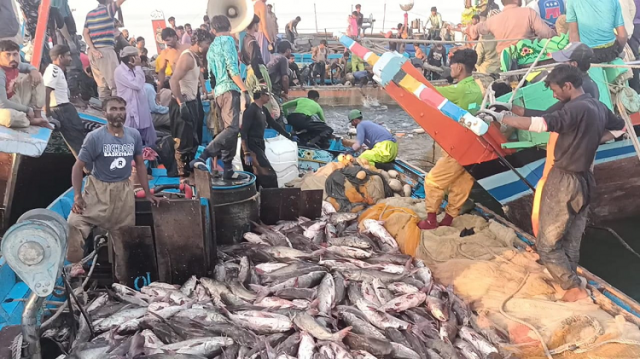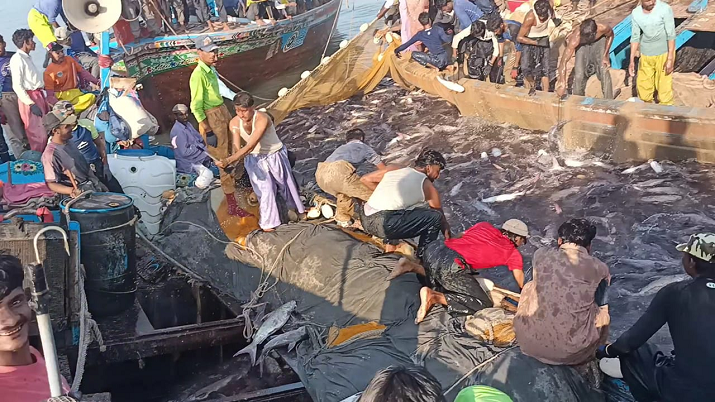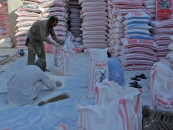Fishermen catch 100 metric tons of sea catfish at Khai Creek
WWF-Pakistan has trained over 30 fishermen to use application systems to collect, report data

In an unusual happening, trained fishermen caught more than 100 metric tons of sea catfish on Saturday evening after a fishing boat from Rehri noticed a mass-scale aggregation of giant sea catfish at the mouth of Khai Creek in the Indus Delta.
Considering this aggregation too big to be harvested by a single boat, the fishermen sought help from six other boats operating in the vicinity. It took more than five hours to harvest the entire aggregation and a total of 100 metric tons of sea catfish were harvested. The catch was auctioned at Karachi Fish Harbour fetching a price of Rs110 per kg, making a total of Rs11 million.
In the past, aggregation of sea catfish were frequently found between October to March along Pakistan's coastline. Such mass-scale aggregations are called “Pinn” in Sindhi and “Aaranga” in Balochi. These schools of sea catfish were regularly observed at the mouth of creeks in the Indus Delta, Sonmiani Bay, Ormara and Pasni in Balochistan. However, as a result of overfishing and changes in the oceanographic conditions, such aggregations have become a rare occurrence.
The last such aggregation was reported from the mouth of Khobar Creek in March 2017 when about 80 metric tons of catfish was harvested by four boats. Along the Balochistan coastline, the last aggregation was reported in April 2015 near Malan and about 150 metric tons of catfish was harvested by 10 boats. The largest known aggregation of a school of sea catfish was reported in April 1984 in Ormara (Pedi Zur) when about 700 metric tons of catfish was harvested by fishermen from a single catfish school, which took five days to complete.

According to Technical Adviser (Marine Fisheries) Muhammad Moazzam Khan, WWF-Pakistan catfish from large breeding aggregations in coastal areas. During these aggregations, females lay their eggs and males - being mouth breeders - pick those eggs up from the water and keep them in their mouth for at least one month, after which juveniles are released in the sea. During this period, male catfish do not feed and rely on their accumulated fat.
According to Khan, such aggregation may consist of one species or multi-species of catfish simultaneously breeding in winter. He further added that the present aggregation seems to consist of only one species, which is called Netuma thalassina or giant catfish which can grow to a size of 180 cm.
WWF-Pakistan Regional Head of Sindh and Balochistan Dr Tahir Rasheed noted that the occurrence of large aggregation of catfish at the mouth of the River Indus in Khai Creek is indicative of healthy and rich environmental conditions along the coast of Pakistan.
WWF-Pakistan, through its capacity building programme has trained fishermen to reduce by-catch and catch target fisheries. More than 30 fishermen have been trained to use android-based mobile application systems to collect and report fish catch data. He said that the initiative will help academia and policymakers to fill data gaps, undertake research studies on various aspects of fisheries and formulate robust fisheries regulations. He also stressed the need to reduce fishing fleets in Sindh and Balochistan, as already recommended in 2016 under Fisheries Resource Assessment Project conducted by Marine Fisheries Department and FAO of the United Nations.



















COMMENTS
Comments are moderated and generally will be posted if they are on-topic and not abusive.
For more information, please see our Comments FAQ